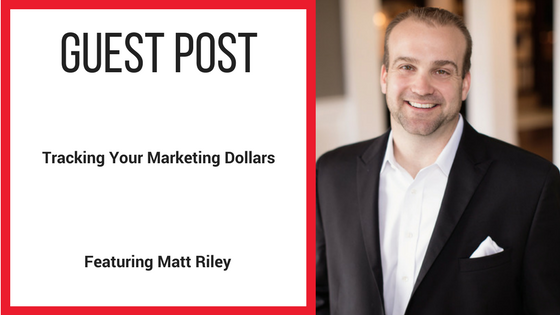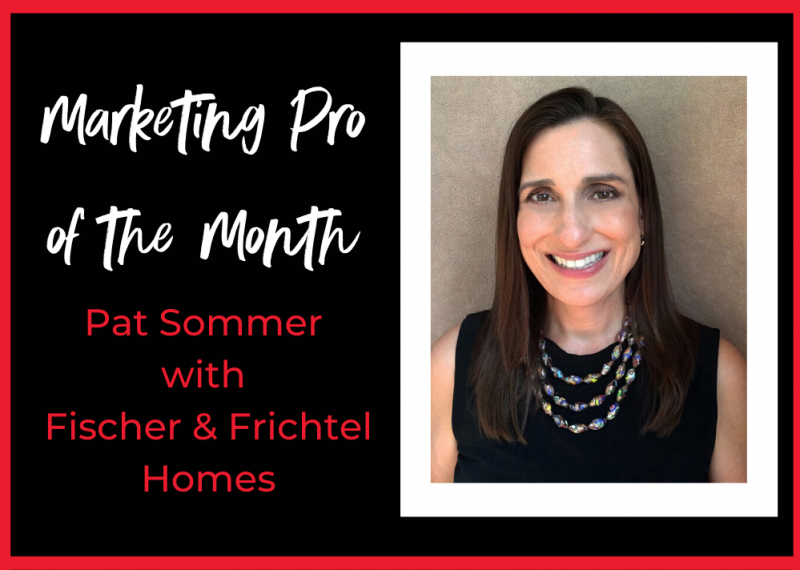Guest Post: Tracking Your Marketing Dollars
October 5, 2017
Marketing pioneer John Wanamaker once said, “Half the money I spend on advertising is wasted; the trouble is I don’t know which half.”
That statement was relevant when it was made in the early 1900’s, and even until recent years, before the invention of the internet. But it shouldn’t be the case today. With all the technology we have at our fingertips, we as marketers should know exactly how effective our marketing dollars are. However, knowing where we’re wasting our money is still something we seem to struggle with.
Every time I go to a conference, whether I’m attending or speaking, I’m always asked the same question: what are you tracking, and why? So, I thought I would take some time to lay out a basic framework, and how it can take some of the guesswork out.
One of the things I love to do is geek out on numbers: how things happen, when they happen, and why they happen. Because of that, I like to track all sorts of oddities when it comes to my online marketing projects. I know this drives some of my staff crazy (like my Online Sales Team), but over the years, it has allowed me to compare data from all different sources and see the information across all marketing channels. As marketers, we want to wear the same set of goggles when reviewing and comparing data and sources.
Here are some basic questions you can use to create a baseline of information to help you make better decisions on where to spend your money and how deep you should go with each source.
-
How many people are coming to your site?
This seems like a simple and basic piece of information. Any marketer should be able to tell you how much traffic comes to their site. The real information lies a little bit deeper and allows you to see what kind of impact your marketing dollars actually have. Digging deeper can tell you four things: 1) where they came from (source type), 2) when they came there (time of day), 3) how long they spent on your site (time on site), and 4) what they came to your site on (mobile/desktop, device or operating system). Gathering all of this information about your website can show you if the money you are spending on third-party sources is actually worthwhile. This, in turn, will help drive down costs per traffic unit.
-
What percentage are you converting to leads?
You may say to yourself, “If I am already hitting my overall sales number, who cares what percentage of traffic is converting into a lead or not?” Tracking this data will tell you several things about your marketing and about your website. Let’s start with the purpose of a website. The purpose of a website (and all marketing for that matter) should be to provide compelling information that makes the customer want to engage and ask questions. The importance of traffic conversion is it shows you if your content is engaging, and also if your website has the right “calls to action”. If your conversion is low, then you are wasting dollars on advertising and leaving sales on the table. Knowing how your site converts also serves as your baseline for what to expect from other marketing sources, always giving you the upper-hand, ensuring you are only paying for what you should be and no more. This will also help you determine if you should continue advertising with the companies you are currently working with already or considering working with in the future.
-
What percentage of leads are you engaging into appointments or onsite visits?
Now, we start getting into the “good stuff” and see some ROI on our efforts and investments. It’s not enough to see that customers are coming to your website and converting to a lead. Here, we have to make sure we are driving qualified traffic to our site, therefore converting qualified traffic into qualified leads. A qualified lead will turn into an onsite visit. An unqualified lead will only result in wasted time and money spent in follow-up. Unqualified leads tell us we are either not advertising in the right places or not giving the right information up front. The customer will then fill out your contact form before they are ready, possibly because they wanted to see more than three pictures on your site, and they were forced to contact you for more information. I relate this to asking for the sale right after you’ve met your prospect… you would never do that because it’s WAY too early in the process. So why would we do the same to a visitor to our website? Knowing how many leads you are converting into an actual “onsite visit” will tell you the exact ROI you have on any given marketing investment.
-
What percentage of onsite visits are you converting into sales?
This is where you’ll find the ultimate “proof is in the pudding” for your marketing efforts. Knowing where your actual sales are coming from will have a direct impact on how and where you spend marketing dollars. If you know that it costs you $1500 to generate one sale all on your own, it doesn’t make sense to spend $3000 to get one sale from a third-party source. But in order to make these educated decisions, you have to be able to track it first.
Having a baseline of information allows you to work backward and predict how much money you need to budget to get your desired results. It also gives you a sense for the type of results you should expect from outside marketing sources. This is how you save money! Any referring site or third-party advertiser will make claims of how much traffic they can generate and how many leads they will send you. But, there’s only one true way to measure that equally, and that’s using your own data as a baseline. If you apply these four basic questions to all your marketing efforts, you will be able to objectively measure all your sources and most importantly your results. Sometimes getting better isn’t what you start doing, but what you stop doing.
Meet The Author – Matt Riley
 Matt Riley is currently the Vice President of Sales and Marketing for Royal Oaks Homes, the Raleigh area’s largest privately-held home builder. Matt oversees all aspects of sales, marketing, and design for Royal Oaks. Matt’s insights come from close to 15 years in the new home building arena, beginning as an on-site sales counselor. As the digital age started to unfold, his hobby and passion for “all things tech” led him into the marketing side of the business. One of Matt’s specialties is online sales and marketing, where he has created multiple online sales teams, all of which have led to record-breaking sales results and overall sales contribution. Matt regularly speaks at NAHB’s IBS, Pacific Coast Builder Conference, and many other New Home Sales and Marketing trainings and conferences.
Matt Riley is currently the Vice President of Sales and Marketing for Royal Oaks Homes, the Raleigh area’s largest privately-held home builder. Matt oversees all aspects of sales, marketing, and design for Royal Oaks. Matt’s insights come from close to 15 years in the new home building arena, beginning as an on-site sales counselor. As the digital age started to unfold, his hobby and passion for “all things tech” led him into the marketing side of the business. One of Matt’s specialties is online sales and marketing, where he has created multiple online sales teams, all of which have led to record-breaking sales results and overall sales contribution. Matt regularly speaks at NAHB’s IBS, Pacific Coast Builder Conference, and many other New Home Sales and Marketing trainings and conferences.
Related Posts:
Categorised in: Digital Marketing, Guest Blogs, Home Builder Marketing & Sales, Thoughtful Thursdays








